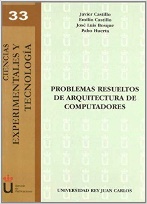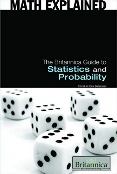-
 Muchas partes de las ciencias y la ingeniería (electromagnetismo, mecánica de fluidos, resistencia de materiales, etc.…) tienes grandes cosas en común, una de ellas es que las ecuaciones que expresan algunas de sus leyes básicas son desde un punto de vista formal idénticas. Esto invita a estudiar a fondo la metodología más adecuada para su resolución y por tanto a que los estudiantes de ciencias e ingeniería tengan una forma de abordar la resolución de estas ecuaciones. Es por ello que el texto que aquí se presenta va claramente destinado a estudiantes de ciencias e ingeniería que quieren aprender a resolver problemas básicos de electromagnetismo e incluso de otras disciplinas cuyos comportamientos matemáticos nos lleven a ecuaciones diferenciales en derivadas parciales de tipo elíptico. Este tipo de ecuaciones tiene una generalidad y un protagonismo suficiente como para que le dediquemos un texto como éste.
Muchas partes de las ciencias y la ingeniería (electromagnetismo, mecánica de fluidos, resistencia de materiales, etc.…) tienes grandes cosas en común, una de ellas es que las ecuaciones que expresan algunas de sus leyes básicas son desde un punto de vista formal idénticas. Esto invita a estudiar a fondo la metodología más adecuada para su resolución y por tanto a que los estudiantes de ciencias e ingeniería tengan una forma de abordar la resolución de estas ecuaciones. Es por ello que el texto que aquí se presenta va claramente destinado a estudiantes de ciencias e ingeniería que quieren aprender a resolver problemas básicos de electromagnetismo e incluso de otras disciplinas cuyos comportamientos matemáticos nos lleven a ecuaciones diferenciales en derivadas parciales de tipo elíptico. Este tipo de ecuaciones tiene una generalidad y un protagonismo suficiente como para que le dediquemos un texto como éste. -
Sin stock
 Optics Using MATLAB(R) provides a functional overview of the development of MATLAB code that can be used to enhance and increase one's understanding of optics though the use of visualization tools. The book ties a variety of optical topics to MATLAB programming activities and can act as a supplement to other textbooks or can stand alone. Part I focuses on a wide range of basic programming fundamentals using MATLAB and includes such topics as curve fitting, image processing, and file storage. Part II provides a review of selected topics in optics and demonstrates how these can be explored using MATLAB scripts. Part III discusses how to use MATLAB to improve the usability of custom programs through graphical user interfaces and incorporation of other programming languages. Those who need flexibility and special calculations in their optical design or optical engineering work will find value in the book's explanations and examples of user-programmable software.
Optics Using MATLAB(R) provides a functional overview of the development of MATLAB code that can be used to enhance and increase one's understanding of optics though the use of visualization tools. The book ties a variety of optical topics to MATLAB programming activities and can act as a supplement to other textbooks or can stand alone. Part I focuses on a wide range of basic programming fundamentals using MATLAB and includes such topics as curve fitting, image processing, and file storage. Part II provides a review of selected topics in optics and demonstrates how these can be explored using MATLAB scripts. Part III discusses how to use MATLAB to improve the usability of custom programs through graphical user interfaces and incorporation of other programming languages. Those who need flexibility and special calculations in their optical design or optical engineering work will find value in the book's explanations and examples of user-programmable software. -
 El presente libro es un compendio de ejercicios resueltos de las asignaturas de Organización de Computadores de segundo de Ingeniería Informática de la Universidad de Cantabria y de Arquitectura e Ingeniería de Computadores de cuarto de la carrera de Ingeniería Informática de la Universidad Rey Juan Carlos. Cada capítulo corresponde a un bloque temático dentro de estas asignaturas. El primer capítulo presenta una serie de ejercicios relacionados con el análisis de rendimiento en sistemas procesadores de propósito general. El segundo capítulo introduce el concepto de segmentación y segmentación avanzada, incluyendo operaciones de punto flotante en el cauce. Los problemas relacionados con planificación dinámica de instrucciones y predicción de saltos se pueden encontrar en el capítulo 3. En el capitulo 4 se resuelven una colección de problemas relacionados con la jerarquía de memoria. Finalmente el capítulo 5 presenta y resuelve una selección de ejercicios sobre dispositivos de E/S y buses. Los autores desean que este libro sea de utilidad para el estudio de dichas asignaturas y quedan a disposición de los alumnos para cualquier comentario o corrección que deseen enviar.
El presente libro es un compendio de ejercicios resueltos de las asignaturas de Organización de Computadores de segundo de Ingeniería Informática de la Universidad de Cantabria y de Arquitectura e Ingeniería de Computadores de cuarto de la carrera de Ingeniería Informática de la Universidad Rey Juan Carlos. Cada capítulo corresponde a un bloque temático dentro de estas asignaturas. El primer capítulo presenta una serie de ejercicios relacionados con el análisis de rendimiento en sistemas procesadores de propósito general. El segundo capítulo introduce el concepto de segmentación y segmentación avanzada, incluyendo operaciones de punto flotante en el cauce. Los problemas relacionados con planificación dinámica de instrucciones y predicción de saltos se pueden encontrar en el capítulo 3. En el capitulo 4 se resuelven una colección de problemas relacionados con la jerarquía de memoria. Finalmente el capítulo 5 presenta y resuelve una selección de ejercicios sobre dispositivos de E/S y buses. Los autores desean que este libro sea de utilidad para el estudio de dichas asignaturas y quedan a disposición de los alumnos para cualquier comentario o corrección que deseen enviar. -
 Calculating and manipulating the unknown has been the enterprise of the field of algebra since its earliest inception in Babylon and ancient Egypt. Trigonometry draws on principles presented in algebra and uses angle measurements to elaborate on geometric calculations. Essential to further mathematical and scientific study, both algebra and trigonometry provide crucial tools in managing variables and understanding the relationships between them. This volume presents the fundamentals of these fascinating areas of mathematics while chronicling their respective histories.
Calculating and manipulating the unknown has been the enterprise of the field of algebra since its earliest inception in Babylon and ancient Egypt. Trigonometry draws on principles presented in algebra and uses angle measurements to elaborate on geometric calculations. Essential to further mathematical and scientific study, both algebra and trigonometry provide crucial tools in managing variables and understanding the relationships between them. This volume presents the fundamentals of these fascinating areas of mathematics while chronicling their respective histories. -
 Communication and, indeed, our comprehension of the world in general are largely ordered by the number and measurement systems that have arisen over time. Numbers lend structure to human interaction by standardizing the language we use to interpret quantities and by helping us understand natural relationships between varying concepts. This book delves into the history of mathematical reasoning and the progression of numerical thought around the world. With detailed biographies of seminal thinkers and theorists, readers develop a sophisticated understanding of some of the most fundamental arithmetical concepts as well as the individuals who established them.
Communication and, indeed, our comprehension of the world in general are largely ordered by the number and measurement systems that have arisen over time. Numbers lend structure to human interaction by standardizing the language we use to interpret quantities and by helping us understand natural relationships between varying concepts. This book delves into the history of mathematical reasoning and the progression of numerical thought around the world. With detailed biographies of seminal thinkers and theorists, readers develop a sophisticated understanding of some of the most fundamental arithmetical concepts as well as the individuals who established them. -
 Audio and visual cues facilitate some of our most powerful sensory experiences and embed themselves deeply into our memories and subconscious. Sound and light waves interact with our ears and eyesour biological interpreterscreating a textural experience and relationship with the world around us. This well-researched volume explores the science behind acoustics and optics and the broad application they have to everything from listening to music and watching television to ultrasonic and laser technologies that are crucial to the medical field.
Audio and visual cues facilitate some of our most powerful sensory experiences and embed themselves deeply into our memories and subconscious. Sound and light waves interact with our ears and eyesour biological interpreterscreating a textural experience and relationship with the world around us. This well-researched volume explores the science behind acoustics and optics and the broad application they have to everything from listening to music and watching television to ultrasonic and laser technologies that are crucial to the medical field. -
 Common to all matter and its smallest and most fundamental unit, the atom determines the properties of a substance and how it responds to other materials and stimuli. Dividing the atom further reveals several smaller particles whose activity forms the heart of nuclear physics. Readers will discover the structure of the atom as well as the ways in which its electrons, protons, and neutrons facilitate both radioactivity and nuclear reactions, both of which have been crucial to technological advancements since the 20th century.
Common to all matter and its smallest and most fundamental unit, the atom determines the properties of a substance and how it responds to other materials and stimuli. Dividing the atom further reveals several smaller particles whose activity forms the heart of nuclear physics. Readers will discover the structure of the atom as well as the ways in which its electrons, protons, and neutrons facilitate both radioactivity and nuclear reactions, both of which have been crucial to technological advancements since the 20th century.



